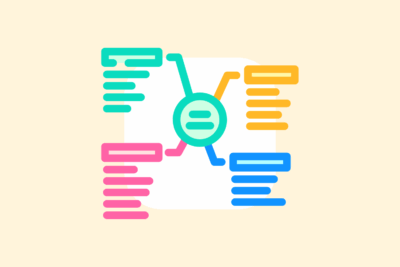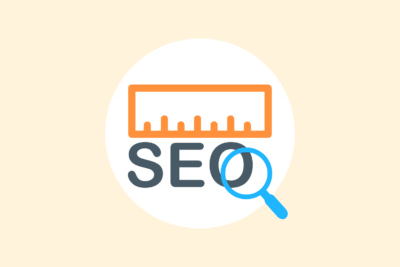How to automate structured data with AI tools

Structured data is an essential part of modern SEO. It helps search engines better understand what your content is about, increases your chances of rich results and contributes to your authority within a given topic.
Yet manually adding structured data remains time-consuming and error-prone, especially at scale. In this article, I explain how to use AI tools to generate structured data smartly, accurately and scalably.
Why structured data remains important
Structured data makes content more compatible with the semantic interpretation of search engines. By using schema.org markup, you explicitly state what certain parts of your page mean. Think products, reviews, articles, events or local businesses. (1)
The benefits include an increased chance of rich results, such as star ratings, FAQ drop-downs or site links. You also get better content classification, which contributes to relevant ranking. You also create more click-through potential through visual enrichment in the SERP.
With the advent of AI-generated search results (such as SGE), contextual interpretation is becoming more important than ever. Structured data helps you move forward in that.
The role of AI in generating structured data
AI tools enable content to be automatically analyzed and translated into correct schema formatting. In particular, large language models (LLMs) such as GPT-4 are able to recognize and classify textual information based on entity, type and context.
From there, a JSON-LD structure is generated, which conforms to schema.org guidelines We also distinguish different types of markups to apply, depending on the page type.
This allows you to automatically generate appropriate structured data based on a standard content output, without manually making adjustments on a page-by-page basis. (2)
Examples of automation applications
Although the output must always be controlled, you can generate structured data automatically using AI within, among others:
Content management systems
Link an AI model to your CMS or headless environment so that when a blog article is created, Article or FAQPage structured data is automatically added based on the content.
Workflows with prompts and templates
Use custom prompts in AI tools to have structured data generated from existing content snippets (such as titles, descriptions and author information) in JSON-LD format.
Integrations with scraping or crawling tools
Let AI generate structured data based on scraped content. Combine this with batch processing to enrich multiple pages simultaneously with markup. These applications enable large-scale application of consistent, correct structured data without requiring manual work.
Getting started with SEO? Feel free to get in touch.

Important points of interest in AI-generated markup
AI tools often work quickly and efficiently, but always require human oversight and careful validation.
During implementation, it is important that the structure and syntax fully comply with schema.org specifications so that the markup is correctly interpreted by search engines.
Avoid unnecessary or misleading markup, such as elements that are not visible to users, and strive for complete consistency between the visible content on your page and the structured data you add.
Everything you highlight should actually be visible to the visitor. Therefore, always check the generated output with tools such as Google’s Rich Results Test and the Schema.org validator before publishing anything.
Automate validation and error detection in bulk
AI tools can not only generate structured data, but also help validate it. By automatically checking thousands of pages for schema inconsistencies, missing fields or deprecated properties, you avoid indexing problems and loss of rich snippets.
Tools like ChatGPT or Claude easily train you to recognize faulty JSON-LD or Microdata, and make immediate suggestions for remediation. This speeds up the QA process significantly at large sites.
Keep steering in a human way
Structured data becomes more effective the more specific, correct and consistent it is. AI can speed up the work, but making strategic choices remains human work. the AI is your assistant, not your final authority. You answer questions like:
- Which entities do you highlight and which don’t?
- Which pages deserve extra emphasis?
- What types of schemas are relevant within your search strategy?
By continuing to make those choices manually and using AI only for execution, you preserve the balance between scalability and control.
Summary
AI tools offer a powerful way to automate structured data, especially for larger Web sites or publishing structures.
Using smart prompts, proper validation and integration into your workflow will save you time, prevent errors and strengthen your content for search engines. The trick is to combine speed and quality and approach structured data as a strategic part of your SEO, not a technical sideshow.
| # | Source | Publication | Retrieved | Source last verified | Source URL |
|---|---|---|---|---|---|
| 1 | Structured data and SEO: What you need to know in 2025 (Search Engine Land) | 07/10/2024 | 07/10/2024 | 09/11/2025 | https://searchengineland.. |
| 2 | 14 Ways to Use AI for Better, Faster SEO (SEO Blog By Ahrefs) | 17/09/2024 | 17/09/2024 | 23/11/2025 | https://ahrefs.com/blog/.. |
- Olya Ianovskaia. (07/10/2024). Structured data and SEO: What you need to know in 2025. Search Engine Land. Retrieved 07/10/2024, from https://searchengineland.com/structured-data-seo-what-you-need-to-know-447304
- Law, R. (17/09/2024). 14 Ways to Use AI for Better, Faster SEO. SEO Blog By Ahrefs. Retrieved 17/09/2024, from https://ahrefs.com/blog/ai-seo/






